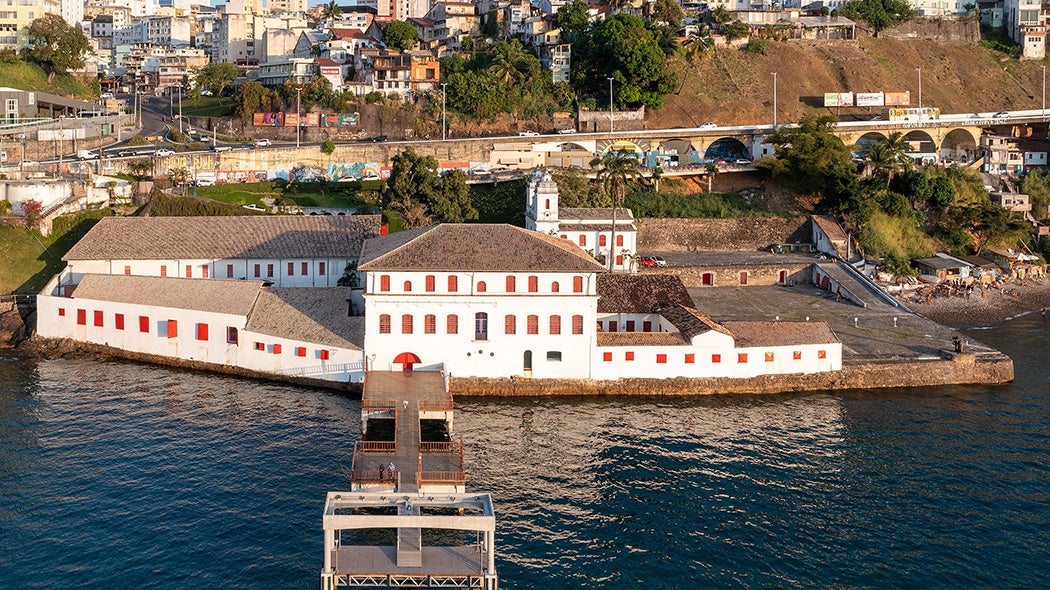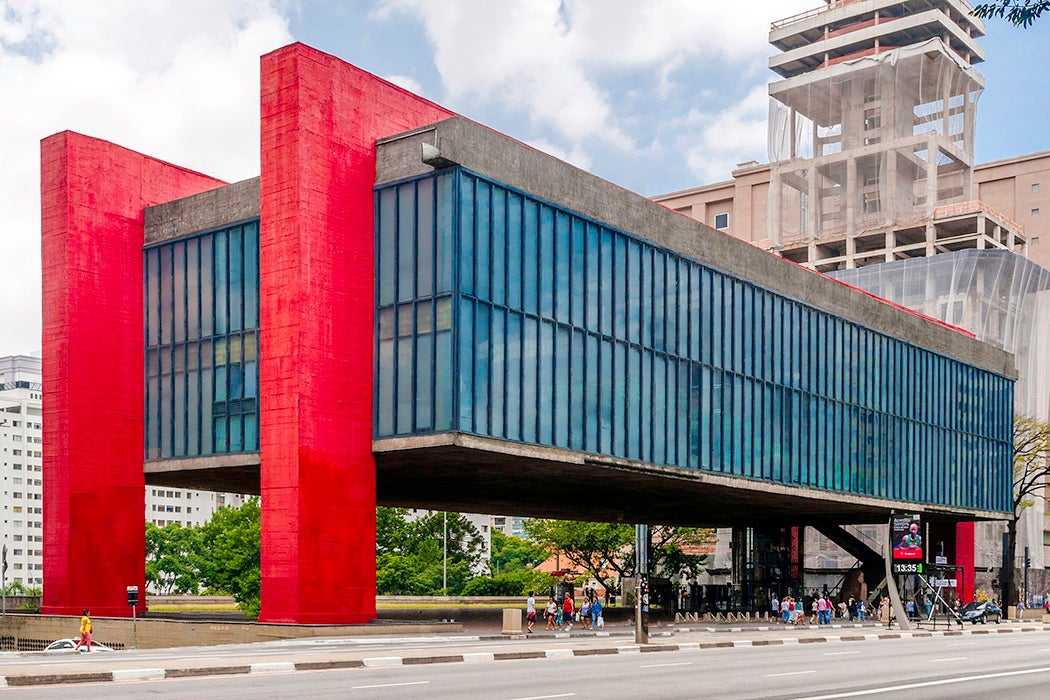The Italian-born Lina Bo Bardi dedicated her adult life to Brazil, the country that gave her the space to practice as an architect and designer. Her São Paulo Museum of Art, with a glass-enclosed interior that effortlessly hangs above its plaza thanks to four bright red support pillars, is an iconic example of Brazilian modernism. Yet, working at the same time as architects like Oscar Niemeyer and Lucio Costa saw Bo Bardi’s work overshadowed for decades.
Bo Bardi’s architectural foundations were shaped in her native Italy. Born Achillina Bo in 1914, Bo Bardi grew up in Rome within a Genoese family. After studying architecture, she moved to Milan, where she found a bit more freedom from the conservative culture of Rome. She wrote and worked for magazines like Domus, Lo Stile, and ‘A’ Cultura della Vita, which found her collaborating with minds like Giò Ponti and Bruno Zevi. It wasn’t until 1946 that Brazil became an option for her, after her marriage to Pietro Maria Bardi. An established art critic and dealer who had been a proponent of Italian Rationalism, P. M. Bardi visited Brazil for the first time in the early 1930s. Together, they left Italy one month after their wedding.

In Brazil, Bo Bardi matured as an architect. As she studied her new home, she developed a design approach that sought to celebrate a modern nation that recognized its history but wasn’t stuck in the past. This is best seen in projects like Solar do Unhão and SESC Pompéia, where she converted existing structures into new functions that served a wider community. As architect and scholar Zeuler Lima explains, “More than just the recovery of existing buildings, Lina Bo Bardi believed that preservation should address what she defined as a historic present, as well as the social dimension of the built environment.” Static preservation that didn’t evolve with the needs of a city wouldn’t serve its community.
The Solar do Unhão complex, located in Salvador, Brazil, was a site along the city’s coastline that dated back to the sixteenth century. It was to be the new home of the Museum of Popular Art and the Modern Art Museum of Bahia. The site was a cluster of historic buildings, including a church and a residential manor, organized around plazas. While preserving the architectural bones of the structures, Bo Bardi opened up the interiors by removing dividing walls and ornamentation. This allowed her the freedom to give a historically significant location in Salvador a new life as an exhibition space, as opposed to being solely bound by its past uses. In his analysis of this design, Lima emphasizes that Bo Bardi’s goal “was to make the historic building present in the collective life of the city.” At Solar do Unhão, she created an active space that engaged with the visual culture of modern Brazi, while recognizing the location’s historical legacy.

Bo Bardi saw herself and her opportunities retreat after the rise of the Brazilian dictatorship in 1964. In the 1970s she re-emerged with an interest in redeveloping a formal industrial area in São Paulo’s Pompéia neighborhood into a cultural center, now known as SESC Pompéia. Bo Bardi’s design called for the redevelopment of existing factory buildings, which spread out horizontally, into cultural facilities and the construction of new rising towers that would house gymnasium facilities. As art historian Hilary Macartney describes,
Built in an uncompromising brutalist concrete, these three towers—a cubic sports block, a linked amenities block, and a cylindrical water tower—make a power statement about the role of community action and resources in a city fast becoming dominated by generic apartment buildings and corporate office blocks.
Bo Bardi spent extended time at the site to understand how the community had come to use it after the factory closed. She allowed that to guide her understanding of how the space should be redesigned, turning a former capitalist space into one for gathering and enjoyment.
Weekly Newsletter
Lina Bo Bardi wanted to create spaces for communities. She was aware of the power of architecture and the histories with which it engaged. Reflecting on Bo Bardi’s work in Salvador and her lasting legacy, Roger M. Buergel notes that she “recognised how intricately linked the Western project of modernity was to colonialism…it was clear that she was looking for an intelligent way to deal with this problem.”
Support JSTOR Daily! Join our new membership program on Patreon today.







